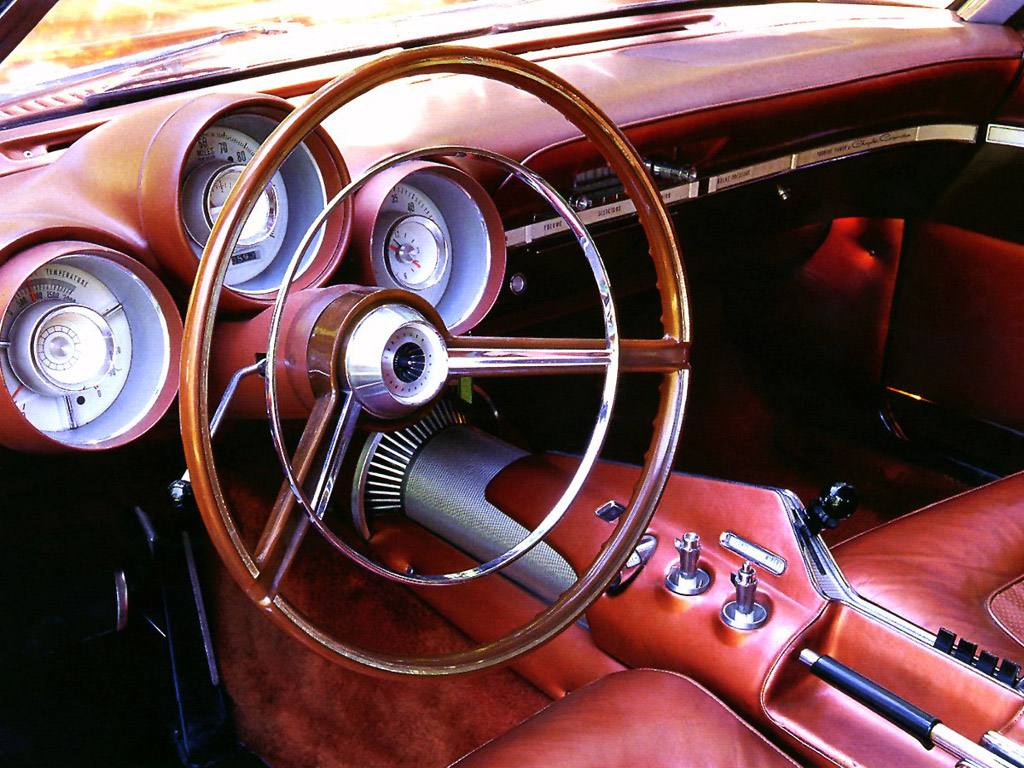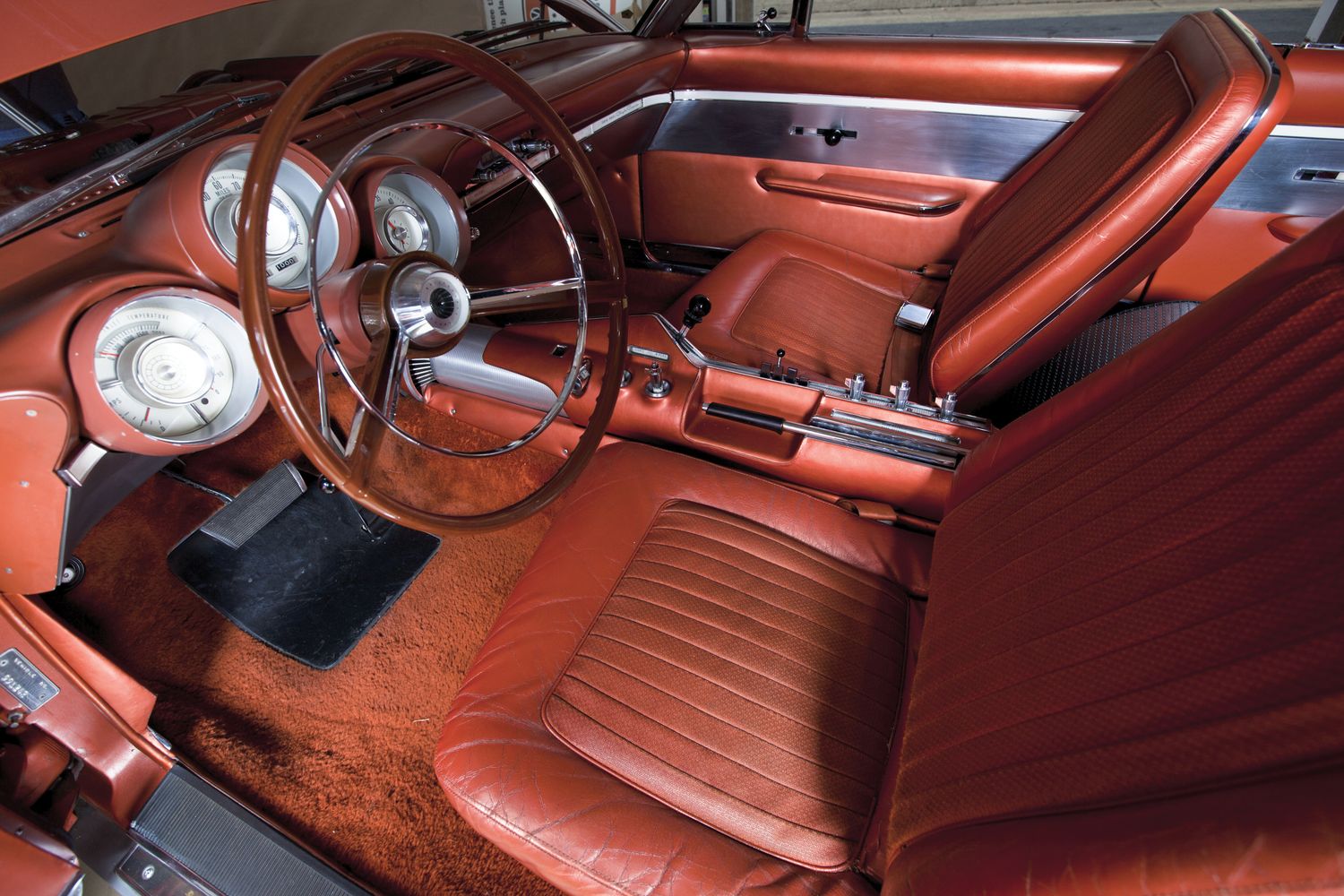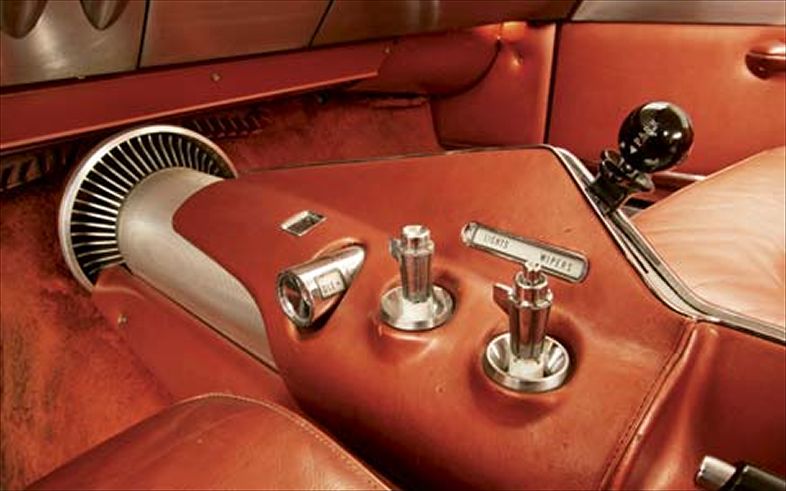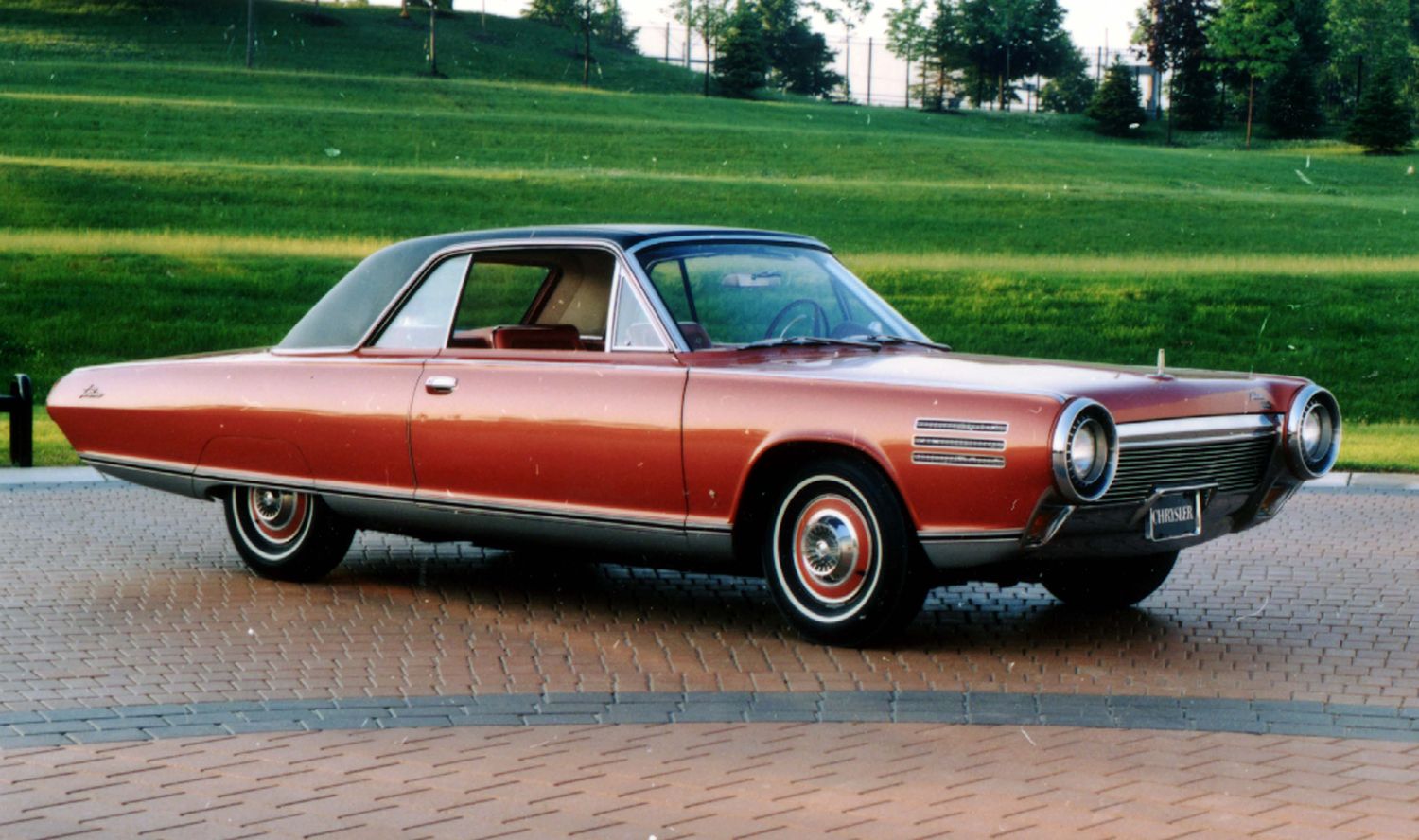
|
The Chrysler Turbine Car
This and That, 2013
Revised September 19, 2013
|
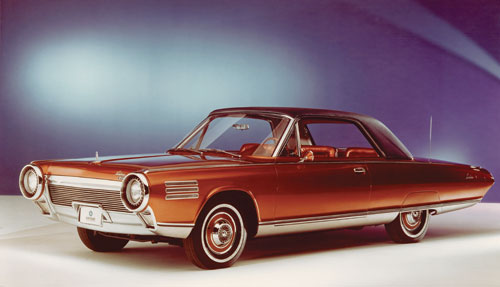
|
+++++++++
Dave Schwandt writes:
Just happened across this while
sitting in the Doctor’s office this AM:
http://www.reminisce.com/1960s/lucky-family-cruised-in-chryslers-futuristic-turbine-car/
+++++++++
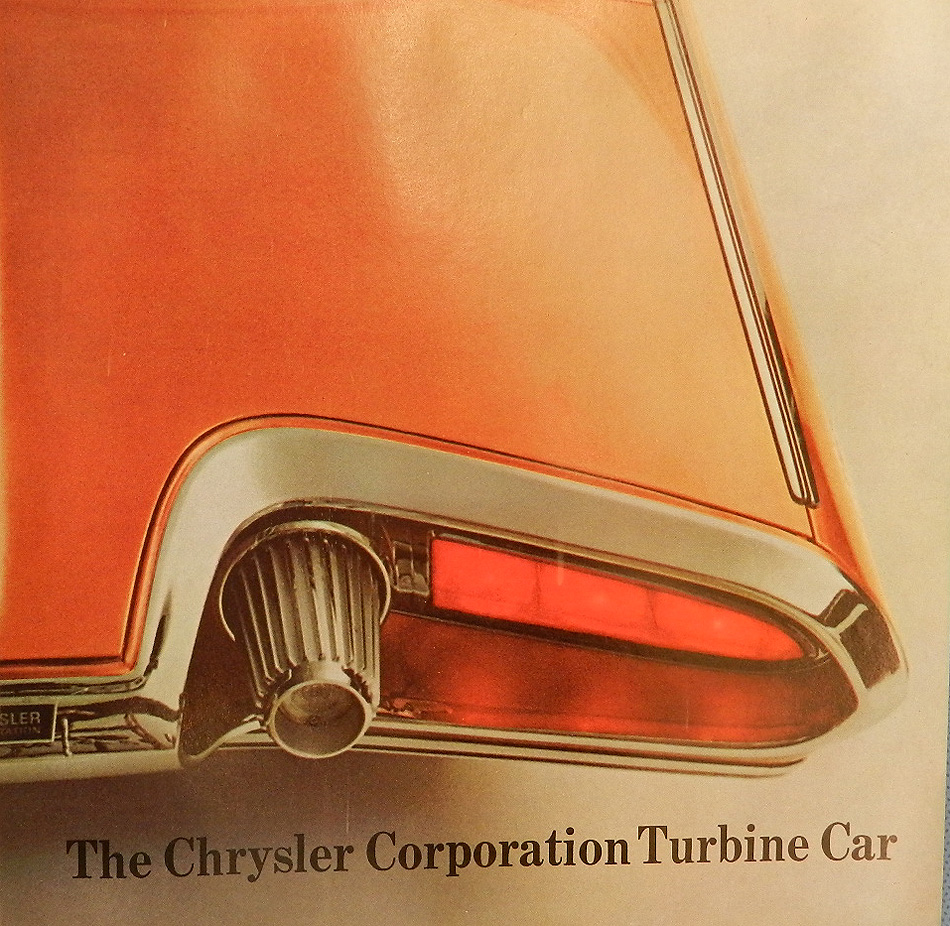
Albert Vannice writes:
I was on the Engineering College
organizing committee at Michigan State U. in
1963, and I wrote Chrysler if they would bring a turbine car to the weekend
exposition -- they said yes, so that was the only turbine car I've ever seen.
I got to ride in it, and it sounded like a big vacuum cleaner, and it
would use almost anything burnable as fuel, including perfume with alcohol
in it! I was always disappointed that it never made it as it was a
beautiful car. I'm glad a few are still around.
+++++++++
Rob Kern writes:
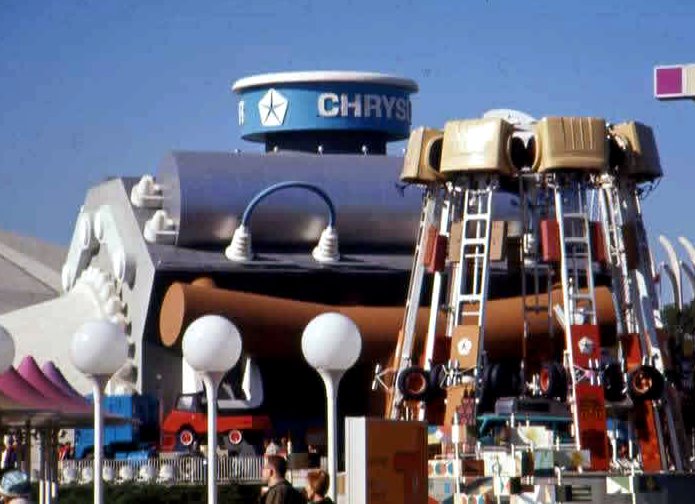 Hello 300'ly to all!
Hello 300'ly to all!
I remember standing outside the Chrysler Pavilion at the New York World's
Fair of 1964-1965 at Flushing Meadows Park, Queens, New York City. I stood for an hour with my Dad watching 2
different colored Turbine cars being driven around the paved loop circling the pavilion. One was completely
gold and another was the turbine bronze with the black vinyl roof. Later
during the show inside the pavilion a white one was rolled onto the stage with great fanfare. Fast forward 3
years later and one of our Boy Scout Camp leaders was affiliated with
Syracuse University's Department of Transportation studies and was
telling us about his 3 month on-loan driving studies with the Turbine car. The
alternative fuels that could be used with that engine was really avant guard
technology that would still be highly applicable today!
+++++++++
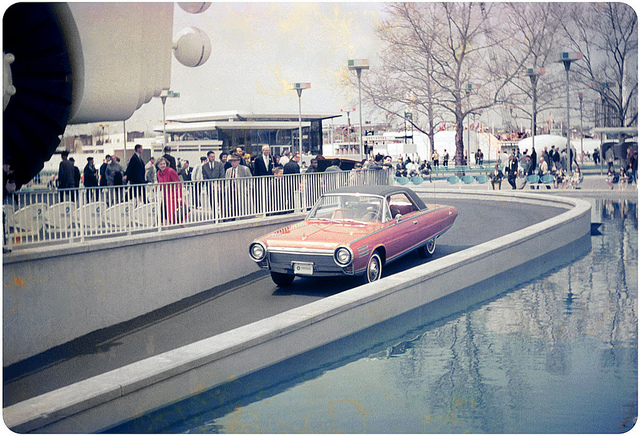
Ron Kurtz writes:
I recall riding in one at New
York's Worlds Fair in 1964. If I had the money, I would
have bought it then and there. If I remember
correctly, few survive as
copies were subsequently destroyed by Chrysler.
+++++++++
John Nowosacki writes:
I, too, rode in one at the NY
Worlds' Fair. Much better than the Mustang I
also rode in at that fair. I think
there are two in
private hands, and one
or two more in various museums, but
many had to be
destroyed for
tax purposes. Even back then
the government was messing with
our fun cars!
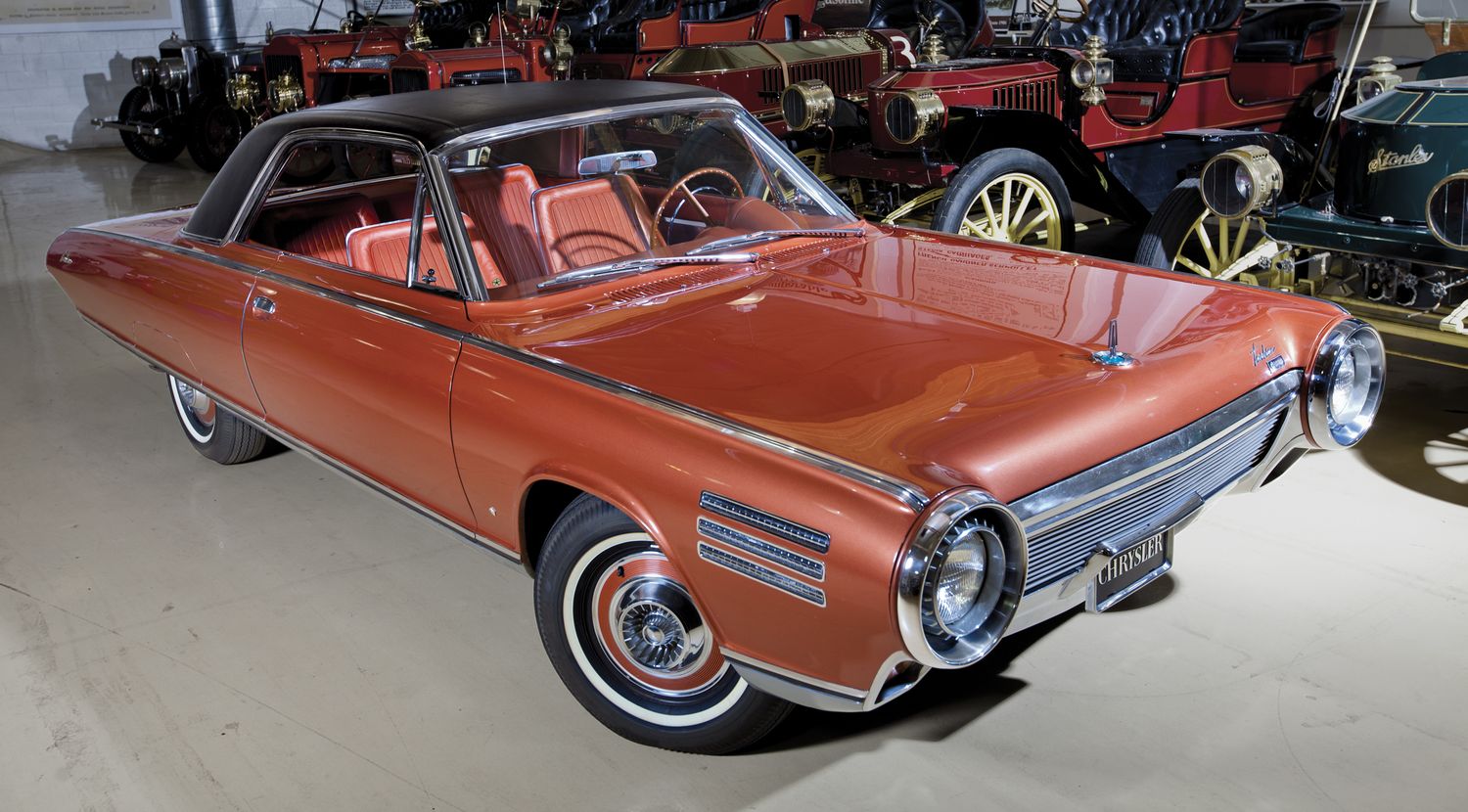
|
+++++++++
Bob Jasinski writes:
According to the recent book (2010)
"Chrysler's Turbine Car" by Steve Lehto, there were 55 built. 46 were
destroyed, and per the book they weren't destroyed to avoid import
tax, that's somewhat of a myth. They were destroyed because Chrysler did not
want the liability exposure of having that many unique cars out there
potentially in the hands of the general public that didn't have access to
parts and service needed to keep them properly maintained. They also didn't
want to see the engines replaced with conventional piston power either.
There are 9 left in existence. 5 of
those 9 are in museums and are not operational, the fan assemblies from
the gas generators were removed. There are 4 operational cars left, Chrysler
has 2, Jay Leno has one (bought from Chrysler in 2009). Collector Frank
Kleptz (I believe he recently died) in Ft Wayne (Terre Haute) Indiana, has the other
operational car. This car was bought from Tom Monaghan, the Domino's Pizza guy,
and he sold it to Kleptz at Hershey some years back reportedly for
$100,000.
Of the 55 cars built, the first 5
were prototypes and as such were various colors, none of these exist. The 9
that are left are all identical cars, painted Turbine Bronze Metallic, and
have identically cut ignition keys.
I wonder what Jay Leno paid for his.
There are videos on YouTube if anybody
has an interest, and there is an
excellent Turbine Car site put together and maintained by Mark Olsen of
Minnesota, who was invited by Jay Leno to come and visit his facility and take a
ride in Jay's car. Mark was a kid when his Dad got a Turbine Car to test
drive back in the program days.
|
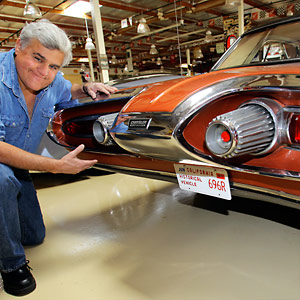
|
+++++++++
Jamie Hyde writes:
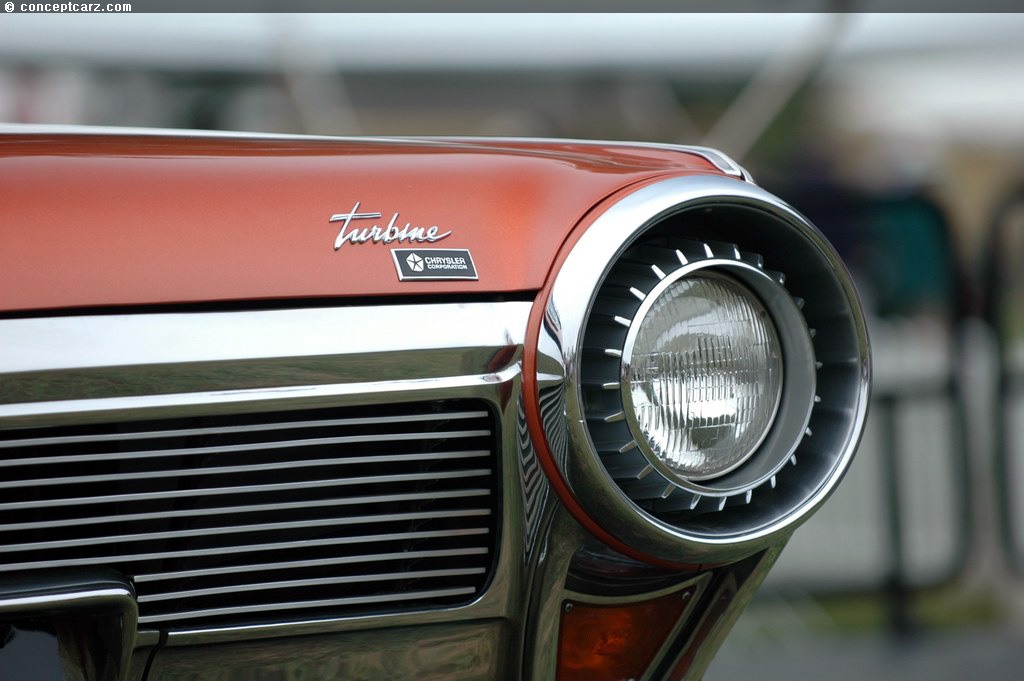 As a young boy of seven, I got to ride in the Turbine car that came to the Rochester NY area. The head
photographer for all the underwater photography development work at
the Eastman Kodak Company was Neil Montanus. Neil's son Dan, and I
were friends in grammar school, Neil was a car guy and for years we
went to the Rochester Auto show with him as he got free VIP tickets.
Turned out that Neil knew the family who got one of the Turbine cars
west of our city and arranged to have it come to Penfield, NY for his
son and I to ride in.
I sat behind the driver seat and do not recall
much about the ride other than the large tunnel down the center of
the car and the neat sound it made when he took off. I think I played
with the power windows switches on the ride.
As a young boy of seven, I got to ride in the Turbine car that came to the Rochester NY area. The head
photographer for all the underwater photography development work at
the Eastman Kodak Company was Neil Montanus. Neil's son Dan, and I
were friends in grammar school, Neil was a car guy and for years we
went to the Rochester Auto show with him as he got free VIP tickets.
Turned out that Neil knew the family who got one of the Turbine cars
west of our city and arranged to have it come to Penfield, NY for his
son and I to ride in.
I sat behind the driver seat and do not recall
much about the ride other than the large tunnel down the center of
the car and the neat sound it made when he took off. I think I played
with the power windows switches on the ride.
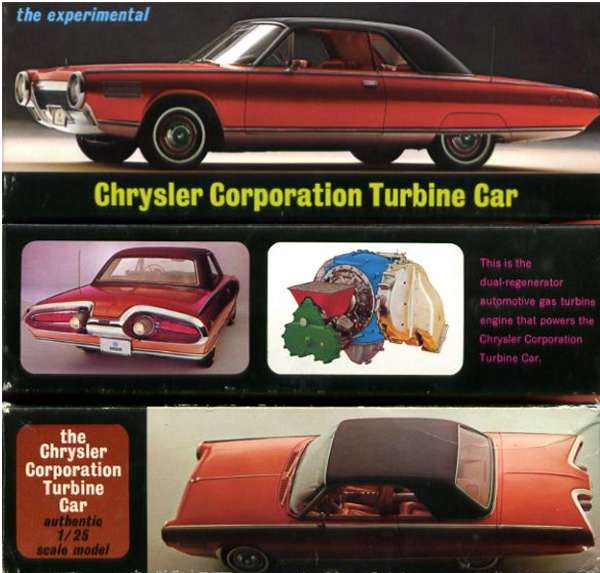
As a kid you know
nothing about turbine engines and we both thought it was like a jet
because of the sound it made. I know we were looking behind us on the
test drive to see if the cars trailing us were feeling the effects of
the turbines exhaust and would be blown off the road.
When we got
back to Dan's house we both scurried upstairs and grabbed the plastic
car models that we were currently working on, and returned them to
the idling turbine car in the driveway, as Neil spoke to the driver.
We held our models under the twin exhaust pipes thinking that they
would melt with the exhaust, and of course they did not. I remember
in the driveway, holding the models under the pipes, that the exhaust
was warm, not really hot, and had an odor like the charcoal grill
after you light it, so they must have been burning kerosene or
something of that order in it.
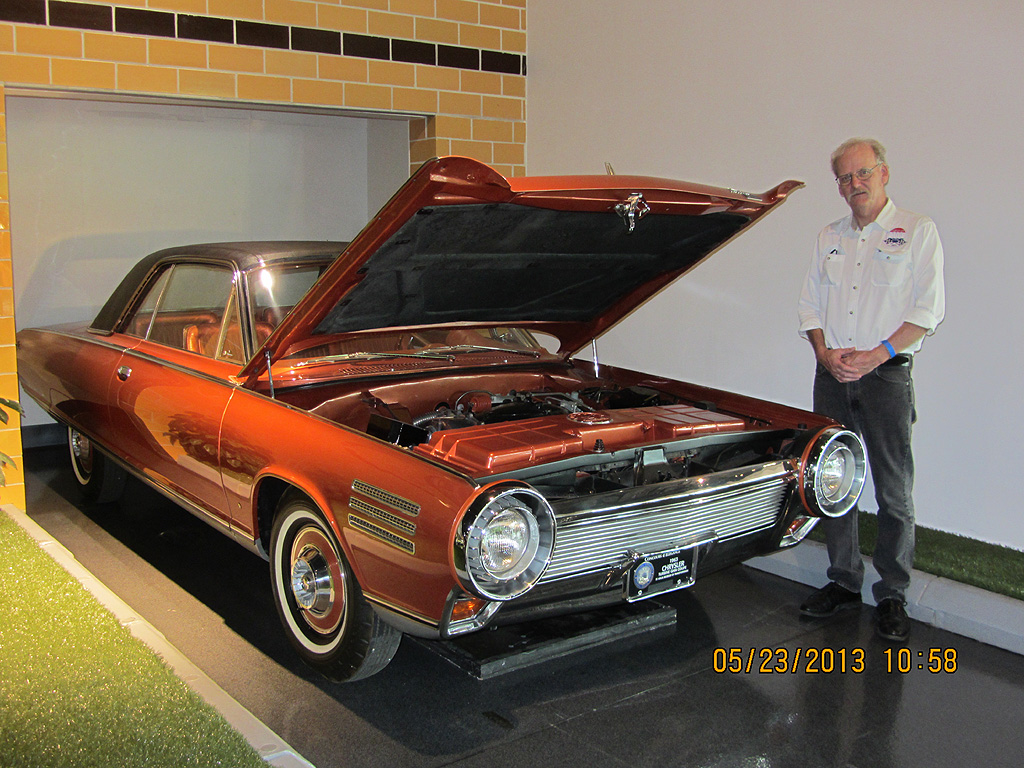
At our recent 2013 spring 300 meet I went to the ST Louis museum of transportation specifically to see one
of the very few operational Turbine cars in existence. After talking
to the docent in charge, and sharing my turbine car story with him,
he allowed me beyond the ropes protecting the car. I was allowed to
stand next to it, if I promised not to touch it. The car was supposed
to have been moved last month but it would not start. The museums
caretaker of the car, Mike (he keeps the keys in his pocket) was
currently at Jay Leno's, as they were fabricating several spare
relays for the cars. This is the reason that the ST Louis car would
not start. Jay works Mike, and also worked with Frank Kleptz before
he passed, to assist them in keeping the cars running.
 I was told by
the docent that Jay, got a spare engine for Franks car, and traveled
to Franks museum in Indiana, to help make him make it operational.
The St Louis car is the same one that many of our 300 club members
got to ride in during the spring 1994 meet in ST. Louis. Please see
Mr. Merritt's You Tube Channel with club member Dave Schwandt's
narration showing the lucky riders, exiting and entering the car. The
ST. Louis car did not run at first, when it was delivered to the
museum, as it had no engine. Several years later when the car was on
already on display the staff was doing an examination of the Museums
assets when they discovered a crate in storage with the words
"Chrysler" stenciled on the box.
As you can guess when they
opened the crate, they discovered a brand new, never ran, spare
turbine engine. They still have that box, and rotate it into the
turbine car display when they change it. I was told by
the docent that Jay, got a spare engine for Franks car, and traveled
to Franks museum in Indiana, to help make him make it operational.
The St Louis car is the same one that many of our 300 club members
got to ride in during the spring 1994 meet in ST. Louis. Please see
Mr. Merritt's You Tube Channel with club member Dave Schwandt's
narration showing the lucky riders, exiting and entering the car. The
ST. Louis car did not run at first, when it was delivered to the
museum, as it had no engine. Several years later when the car was on
already on display the staff was doing an examination of the Museums
assets when they discovered a crate in storage with the words
"Chrysler" stenciled on the box.
As you can guess when they
opened the crate, they discovered a brand new, never ran, spare
turbine engine. They still have that box, and rotate it into the
turbine car display when they change it.
At my local Rochester Mopar monthly
meeting June 6th I gave a trip report of our spring 300 meet in St.
Louis and mentioned the Turbine car I had just seen, and my story
about riding in the car as a young boy. One of our club members who
at the time was a young man working at a Chrysler Plymouth dealership
in our area had the honor of servicing that very car I rode in. The
club member told us that Chrysler had arranged to have local
dealerships service the cars under the direction of a Turbine
maintenance team member. He told me all he did was check fluid levels
in the rear end, transmission, power steering etc. and greased the
front end components. It need nothing else done. I asked if he was
allowed to drive it onto the lift and he did not recall doing it.
+++++++++
+++++++++
Rick Clapham writes:
All; In 1981 WPC meet in Troy Michigan, We ventured over to Highland Park to Check out the Chrysler Engineering Division, after the tour we came out and found a black 300F coupe and a Bronze turbine Giving rides. The sound was very similar to mom's old Hoover carpet Vacuum cleaner. I did not get a ride at that time. I was introduced to Mike and Noel Arbuckle at that time. They had a 62 300 four door HT.
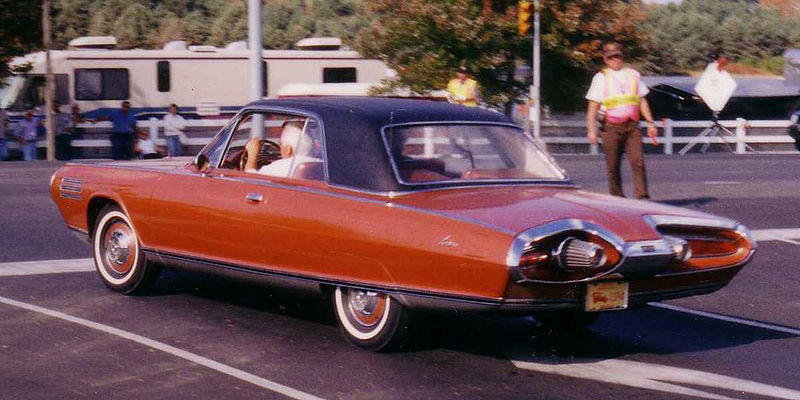
In 1983 Sam Molina and My family went to Falon Nevada for the wife's family reunion. with the joint WPC and Chrysler 300 Meet at Lake Tahoe. We met our old friends and went to some of the seminars presented. The one I really remember was one presented be George Stecher or Stecker whom had worked in the Turbine Program. His presentation was terrific. At that time the Turbine Program had been terminated, I think he said 1979. He had been a mechanic and even drove cars for testing. An interesting story he told Sam and I after a few, drinks was... He was a member of the Screen Actors Guild, he had to join to be able to be on the movie set that the white turbine car was filmed. He actually drove the car in most of the scenes. The Lively Set movie, I had not seen at that time. Sam Molina remembered seeing the movie. George said the car was painted white so the damage to the body was less noticeable. He was absolutely distraught about the destruction of the cars and the dissolution of the Turbine Car Program.
+++++++++
Gil Cunningham writes:
Thanks, Bob, for the Turbine information. Excellent. While working at the Proving Grounds in those years,
I saw a number of Turbines going in and out of the road test garage. For
some reason, I never asked for a ride. (I was in the Truck Experimental
department, and a new hire---didn't want to "fool" around, I guess!) I do
remember seeing the one which was all bronze (no vinyl roof) several times.
Never saw the white one, though.
+++++++++
Gary Runkle writes:
What a great idea with great execution, Bob!
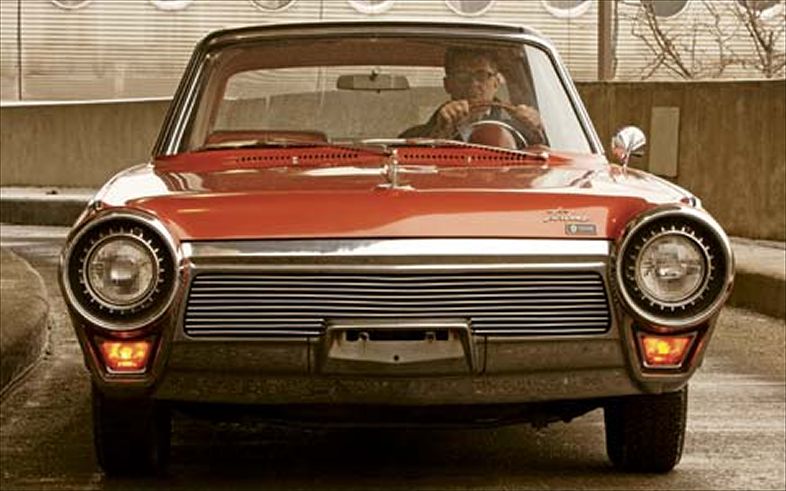
And for people who can't get enough of the history, I have a tiny factoid to add. There is one front view of the car and I can easily identify exactly where this picture was taken. It was taken on the ramp to the parking deck of Detroit's Cobo Hall.
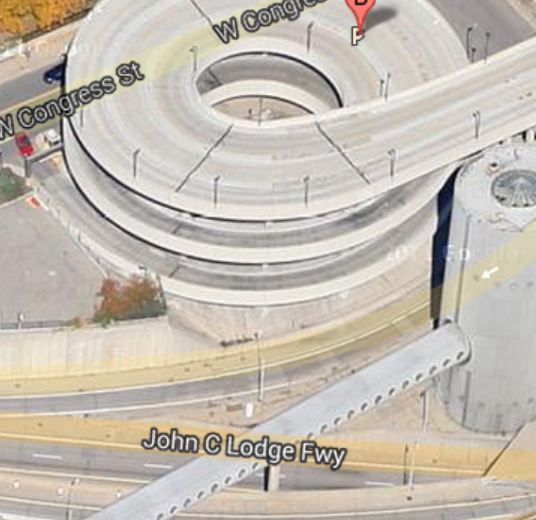
This ramp has a very distinctive corkscrew construction that is about 3 stories tall. Notice in the bottom of the pic of the parking ramp, there is a long tube covered with port holes. You can match up those same port holes in background of the car picture.
That port-holed tube is a walk way for the parking garage at the Joe Louis Arena. Construction on that arena started in 1977 and completed in 1979, so I would say the car pic could not be older than 1980.
Below is a ground level shot 180 degrees from where the car pic was taken.
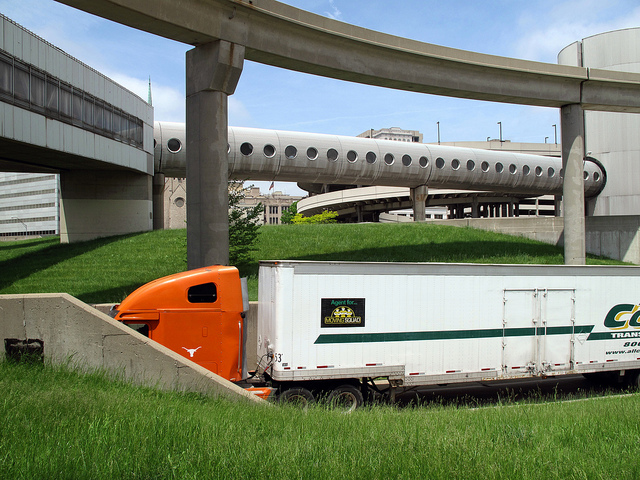
So how's that for minutia!!!
Thanks again for slingin' the new web page for us.
+++++++++
Tony Rinaldi writes:
Consider adding this photo of the designer Engel with the Dodge Charger Turbine concept vehicle. They were to make 500 of them. Acceleration lag, poor gas mileage and upcoming pollution regulations killed the project. The design went on to be the 1966 Dodge Charger.
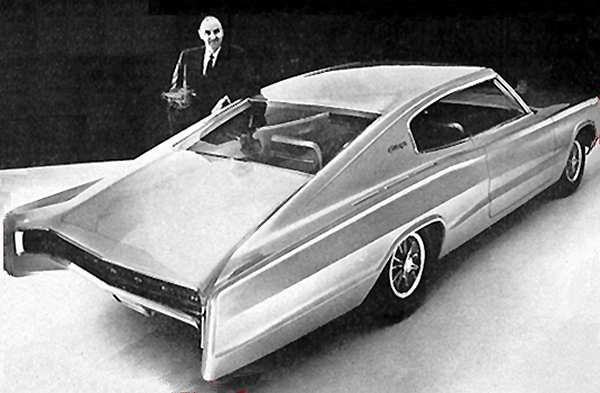
|
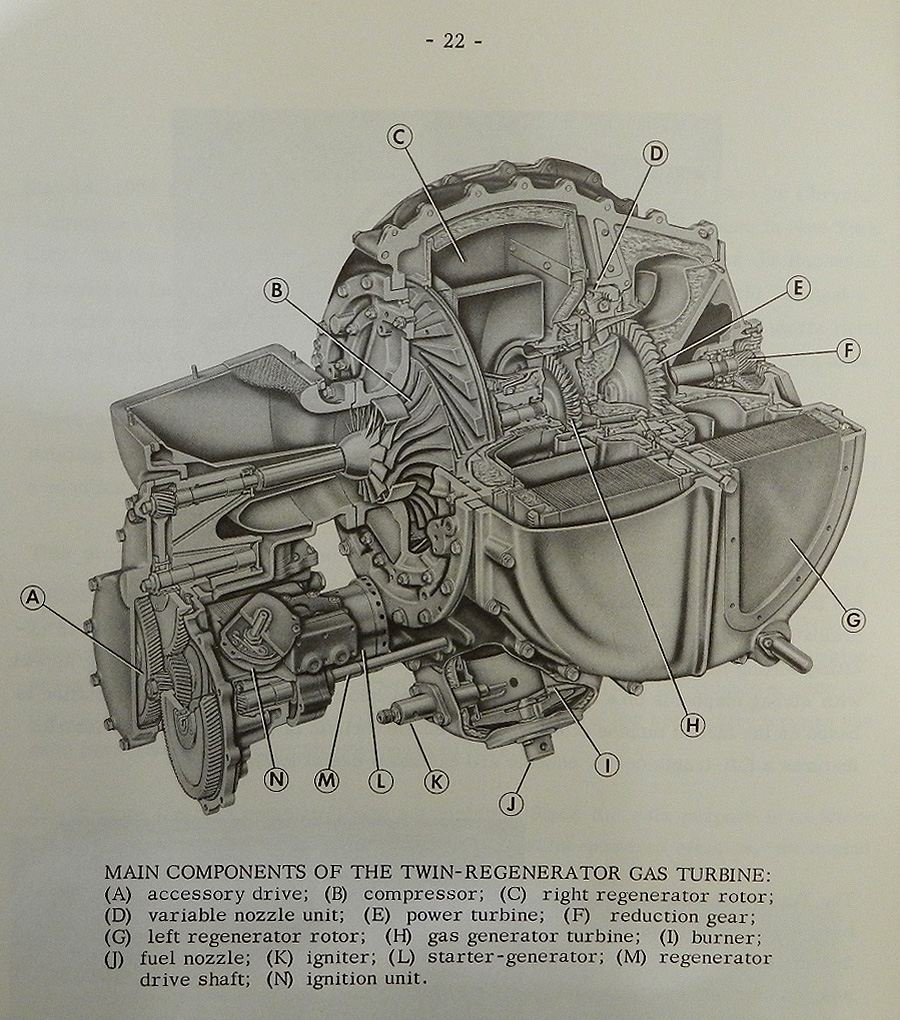

It might be a surprise to hear this turbine engine is Chrysler’s
fourth generation turbine design.
Chrysler’s first turbine car
was back in 1954, in a Plymouth.
Subsequent turbine cars and
engines included a 1955, 56, 59, and 60 Plymouth, a 62 Dodge, even a
1960 Dodge two and a half ton truck.
SPECIFICATIONS OF CHRYSLER CORPORATION’S GAS
TURBINE ENGINE
|
General
|
Type: Regenerative gas turbine
|
|
|
*Rated Output:
Power – 130 bhp @ 3,600 rpm
Torque – 425 lb-ft @ zero
output shaft speed
|
|
|
Weight: 410 lbs
|
|
|
Basic Engine Dimensions (without
accessories)
Length – 25.0”
Width – 25.5”
Height – 27.5”
With current accessories in place,
the over all length is 35”
|
|
|
Fuels: Unleaded gasoline, diesel
fuel, kerosene, JP-4 etc.
|
|
Components
|
Compressor: Type – One stage
centrifugal
Pressure ratio 4/1, 80% efficiency
|
|
|
First Stage Turbine: Type –
one stage axial, 87% efficiency
|
|
|
Second Stage Turbine: – one
stage axial, 84% efficiency
|
|
|
Regenerator: Type – Two
rotating disks, 90% effectiveness.
|
|
|
BurnerL Type – Single can,
reverse flow, 95% efficiency
|
|
*Design Point Characteristics
|
Maximum Gas Generator Speed –
44,600 RPM
Maximum Second Stage Turbine Speed
– 45,700 RPM
Maximum Output Speed (after
reduction gears) –4,680 RPM
Maximum Regenerator Speed –
22 RPM
Compressor Air Flow – 2.2
lb/sec
First Stage Turbine
Inlet Temperature – 1,7000
F
Exhaust Temperature
(full power) – 525o
F
Temperature at Idle –
180o F
|
* Ambient conditions:
Temperature 85oF;
Barometric Pressure 29.92 in. Hg
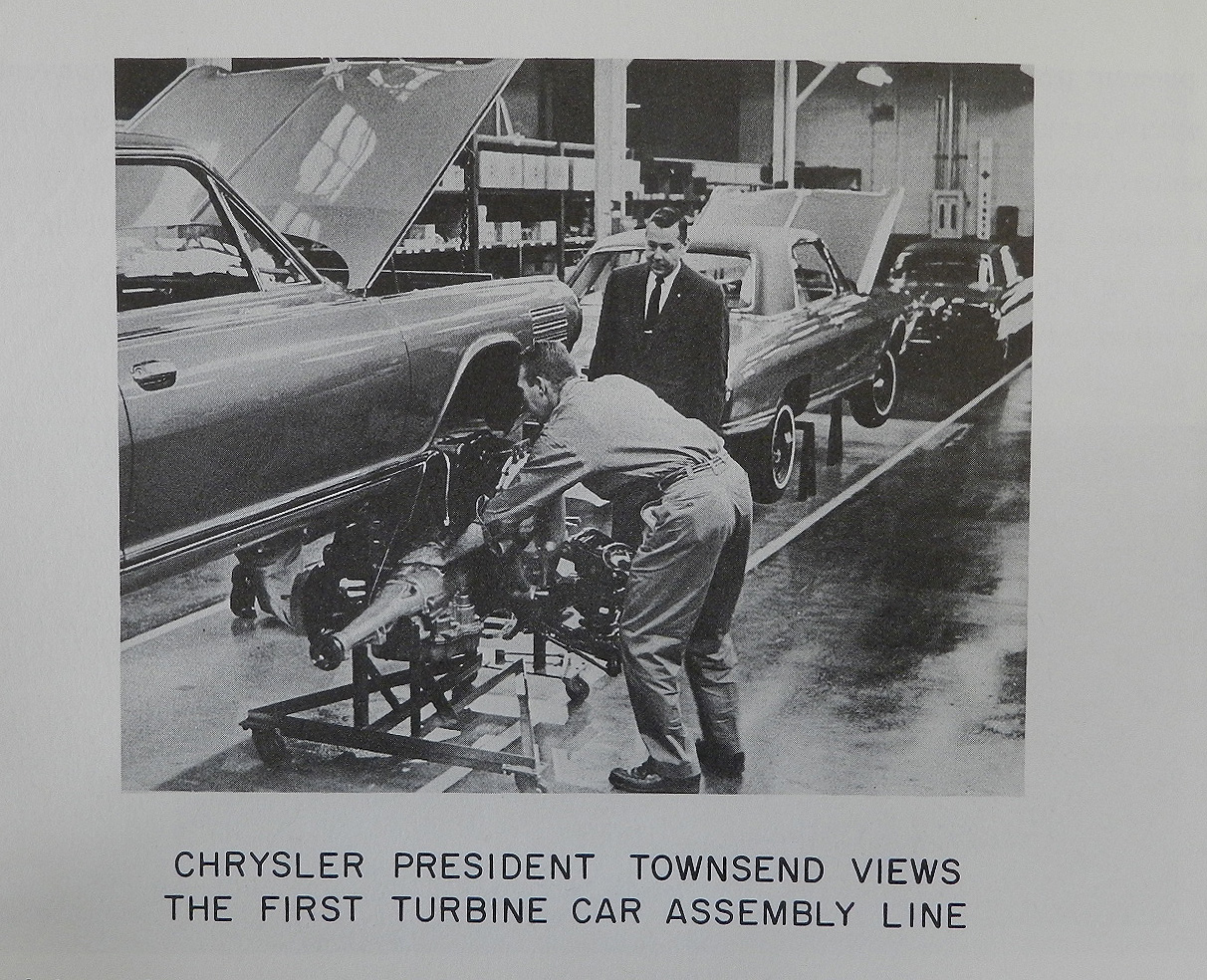
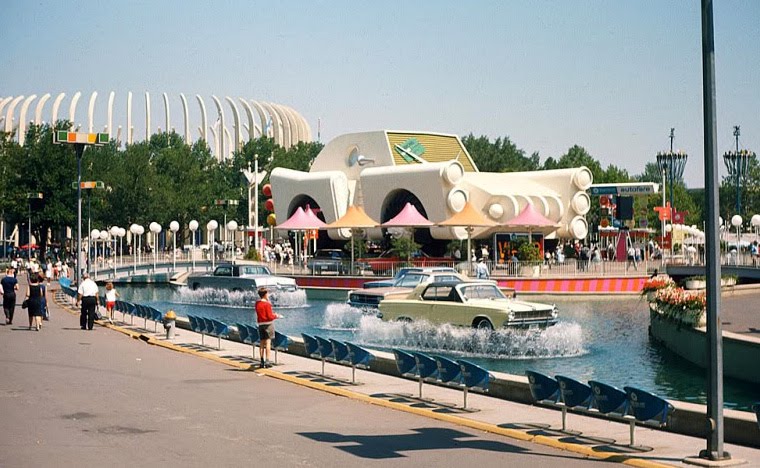
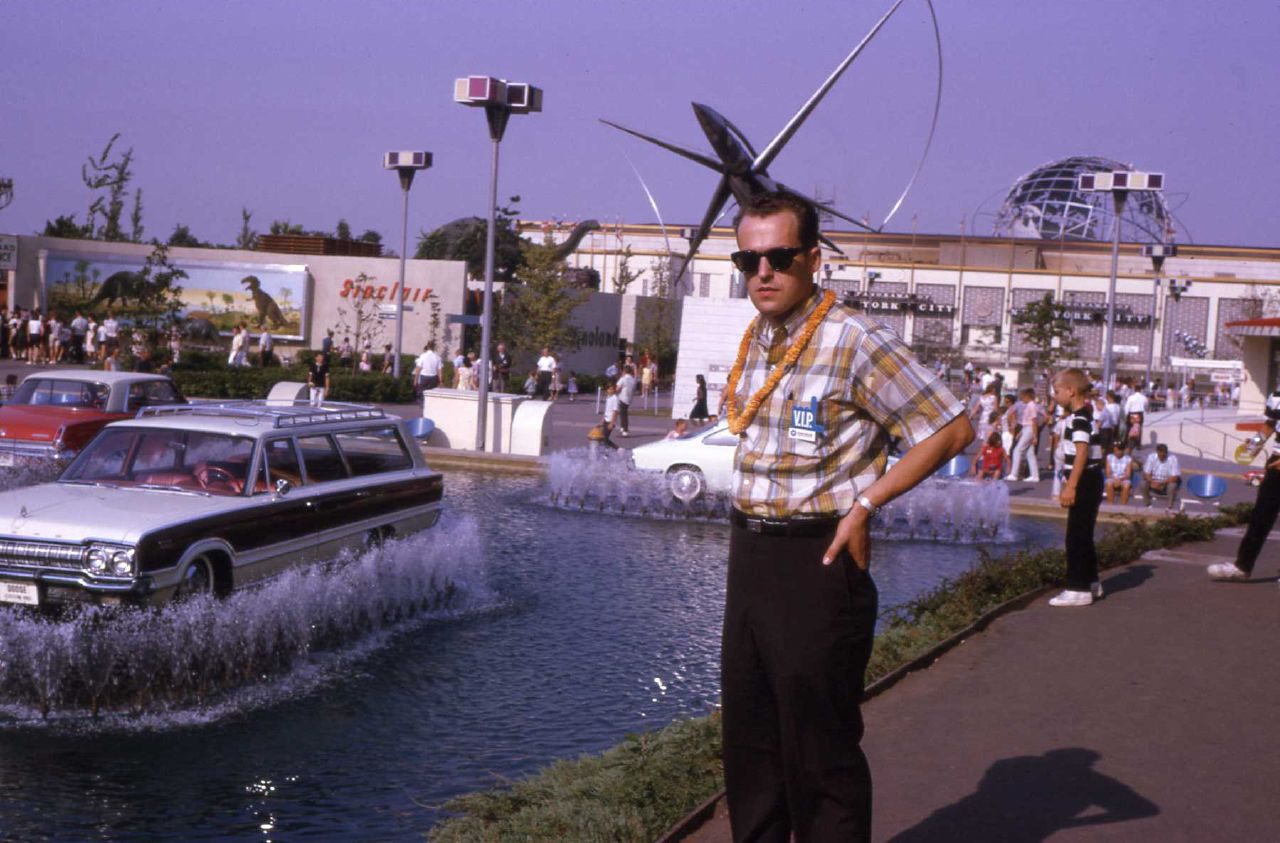
Chrysler exhibits at the 1964 World's Fair

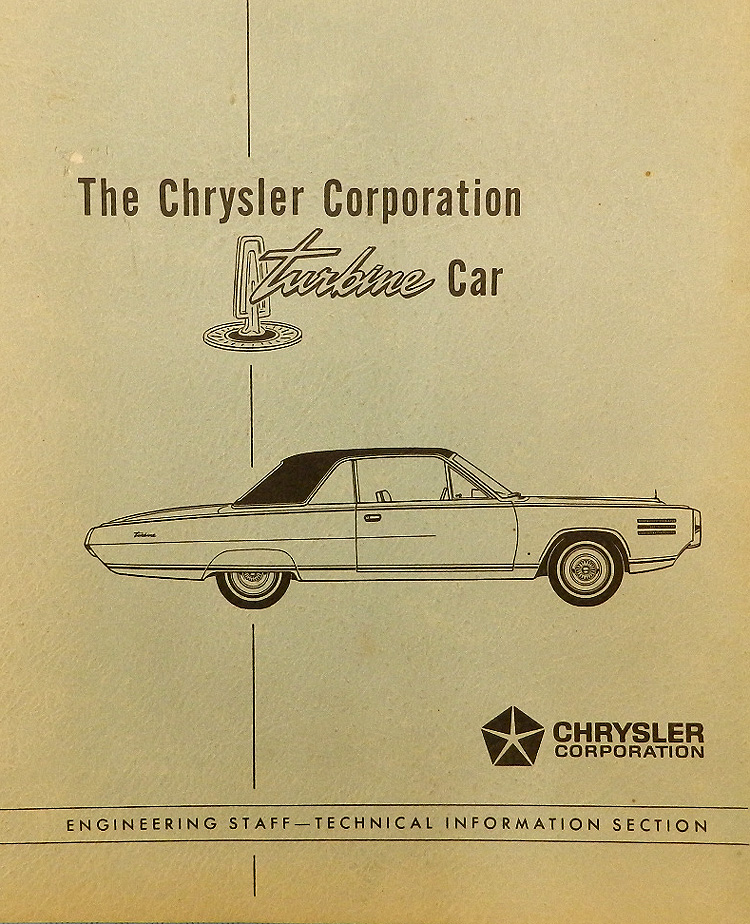
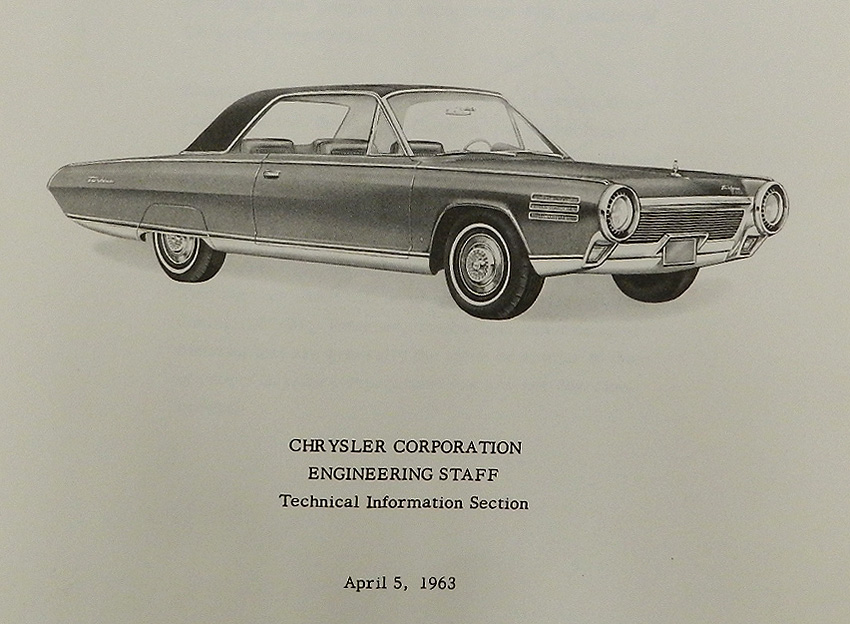
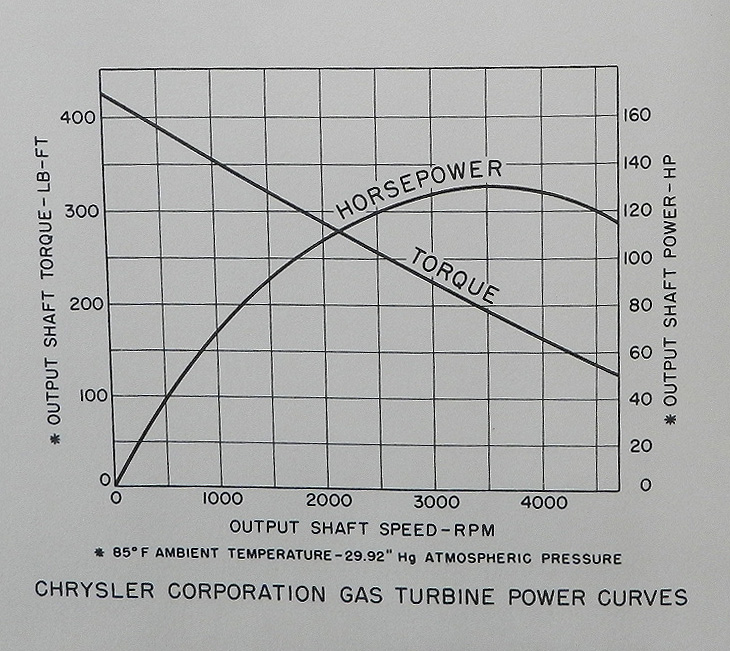
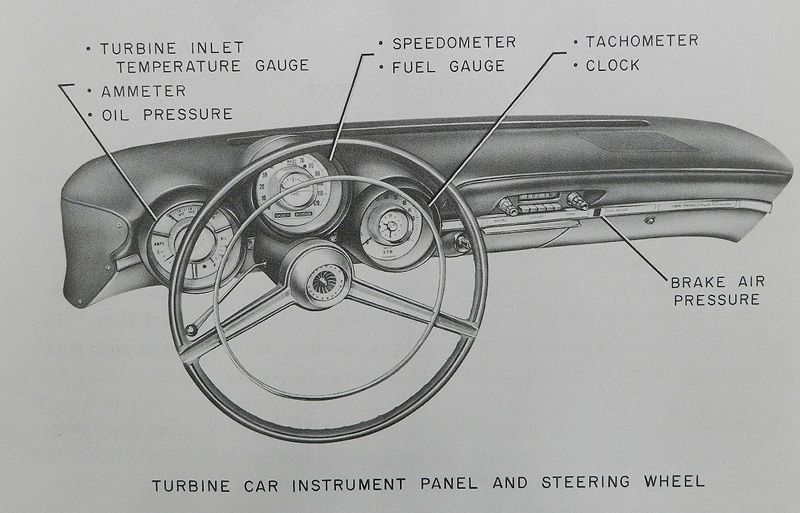
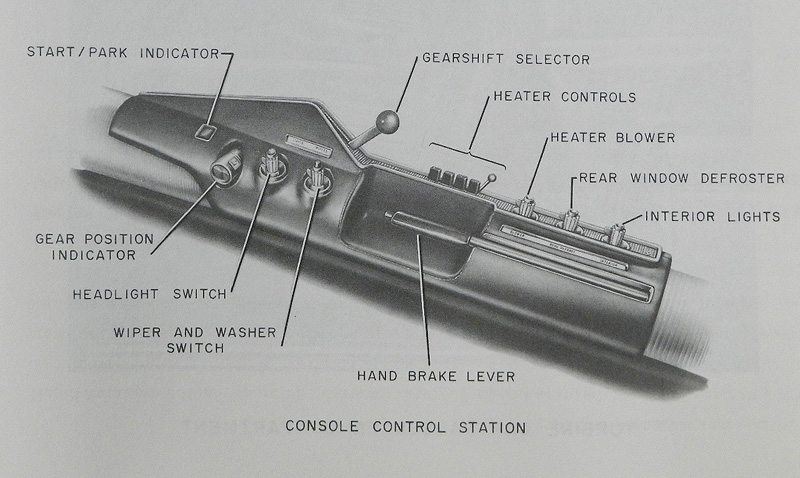
Equipped with power brakes, the master cylinder has an air booster.
Air pressure
is sourced from an electric compressor.
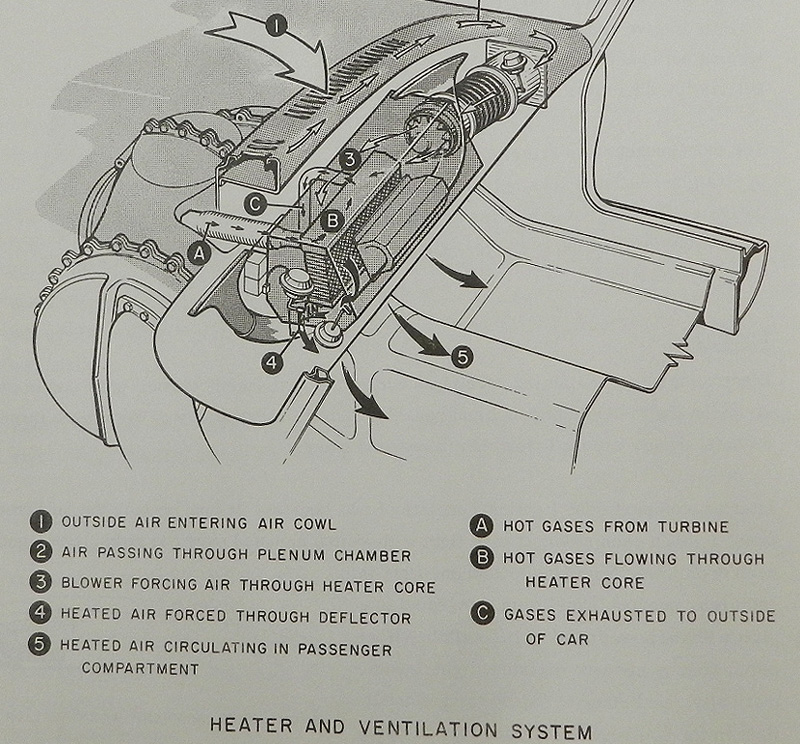
No air conditioning was available. Turbine exhaust heat was used for the heater.
Since turbine engines have no vacuum, the console heater controls worked with air pressure.
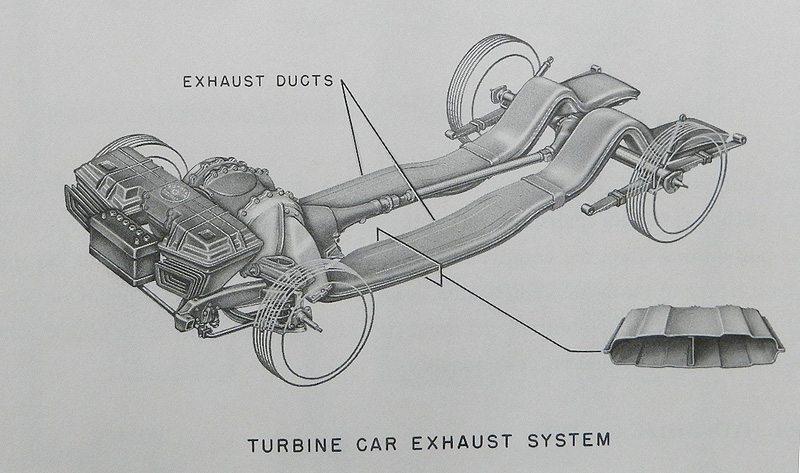
The engine, transmission, and front suspension is removed as a unit for easy servicing.
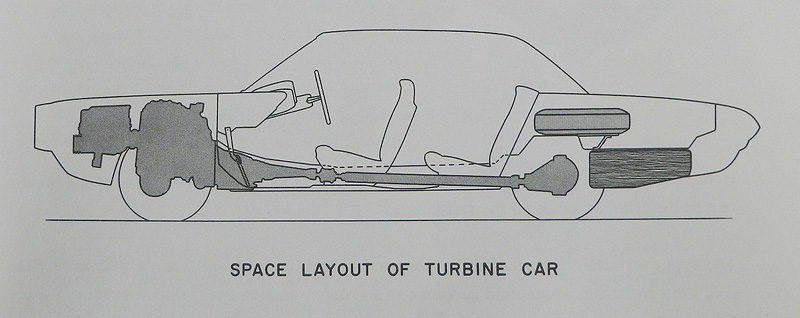
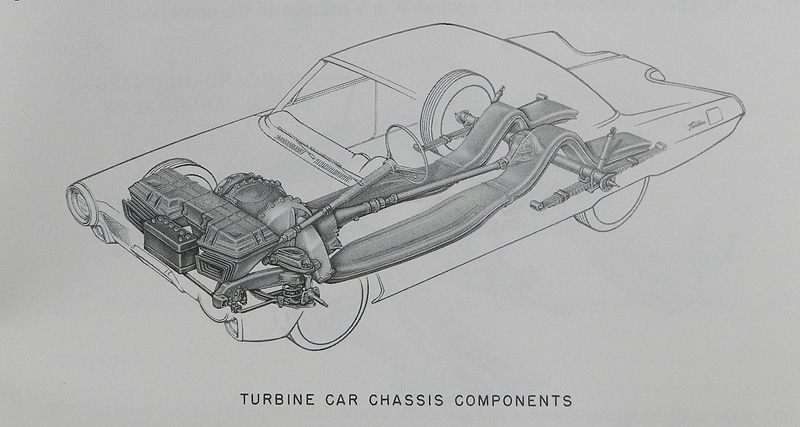

The Turbine Car did not use torsion bar suspension.
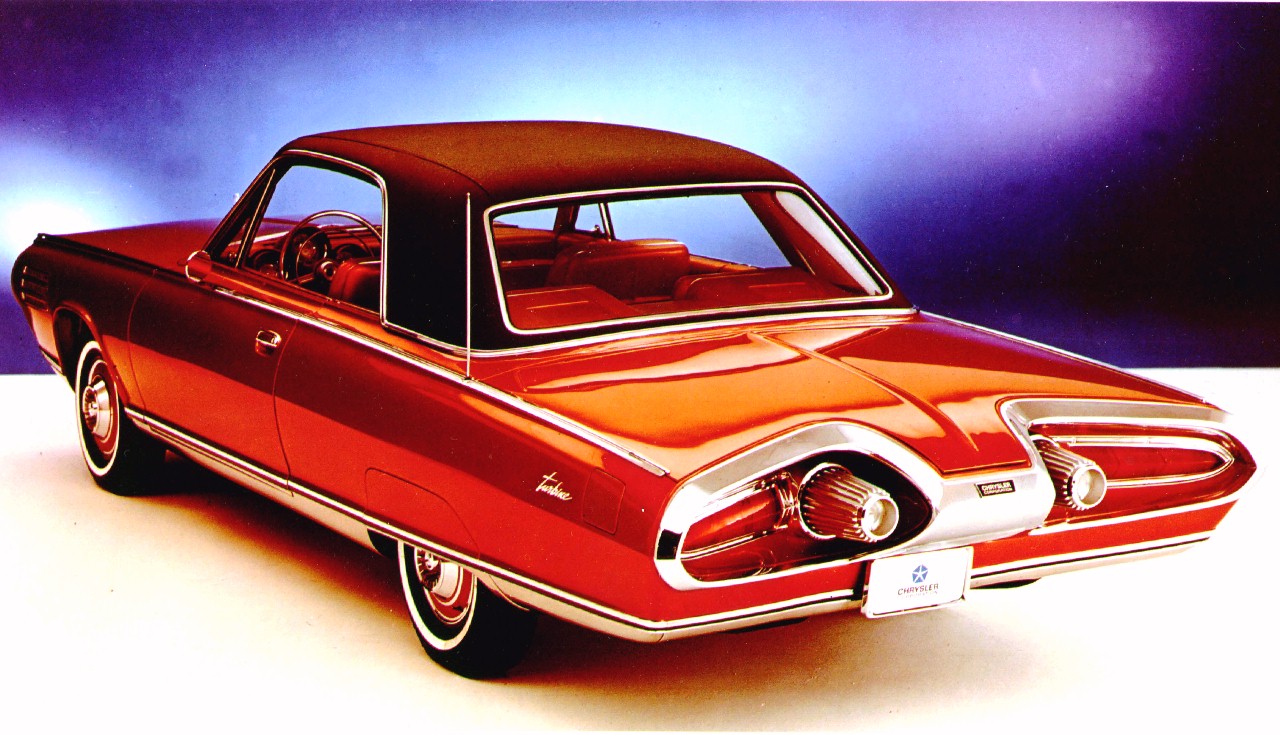
110" wheelbase. 3,900 pound curb weight. 3.23 rear axle. 7.50 x 14 tires. 21 gallon fuel tank.
Back
|






























